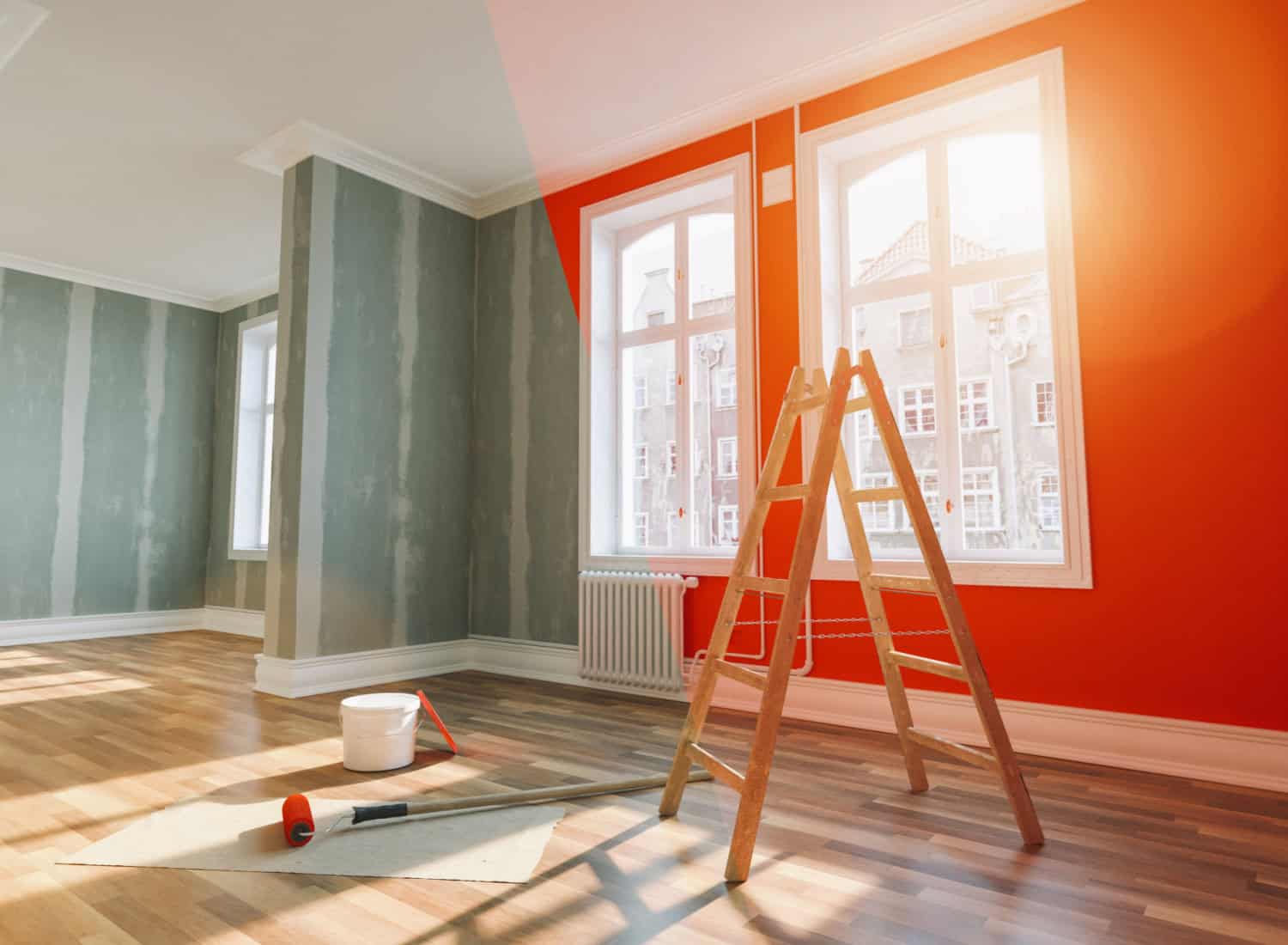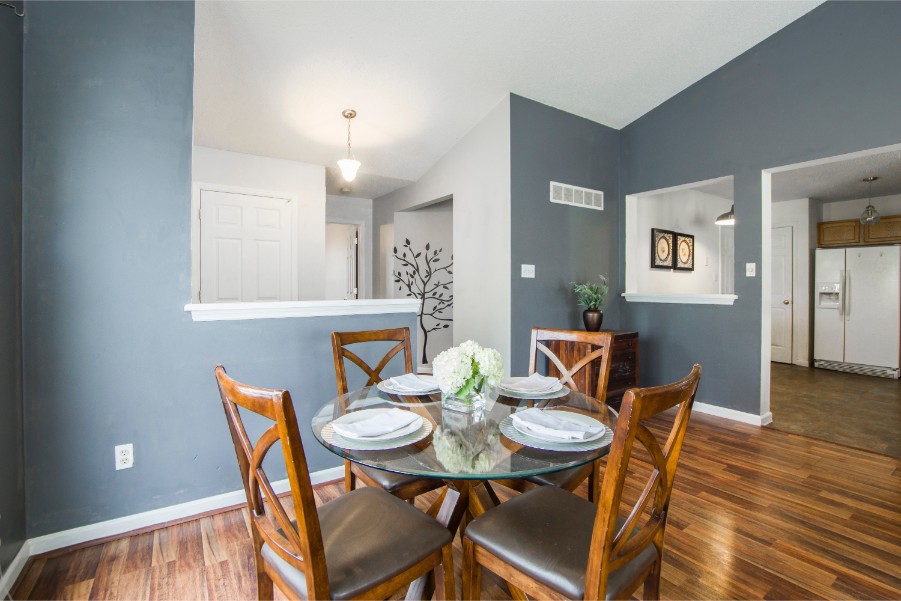Lakewood Interior Painting: Expert Services to Refresh Your Home’s Style
Lakewood Interior Painting: Expert Services to Refresh Your Home’s Style
Blog Article
Enhance Your Interior Style With Comprehensive Color Assessment
The integration of color consultation into interior style presents a special chance to refine and raise the aesthetic and emotional vibration of a room. By involving with a seasoned color specialist, you can navigate the complexities of shade option, ensuring that your options not just enhance building functions however likewise resonate with personal style and mental influence.
Benefits of Color Examination

Additionally, shade consultation aids in making the most of all-natural light and optimizing spatial perception. Lighter hues can make a space appear even more expansive, while darker tones produce an intimate setup. Cleveland Metro Painting Specialists. This tactical application of shade can dramatically affect the overall atmosphere of any kind of interior space
In addition, professional consultants possess an extensive understanding of timeless standards and current patterns, guaranteeing that the chosen colors will certainly continue to be enticing over time. This insight can conserve clients from expensive redesigns in the future. Shade examination equips customers by providing them with a clear vision and direction, fostering confidence in their layout options and inevitably leading to a much more effective and gratifying interior layout end result.
Recognizing Shade Psychology
The importance of shade psychology in interior decoration can not be overstated, as it explores the psychological and mental effects that various colors can stimulate in individuals. Colors can affect state of mind, actions, and even efficiency, making them a crucial consideration in any type of layout project.
As an example, warm shades such as red, orange, and yellow are frequently related to power and warmth. They can stimulate sensations of excitement and comfort, making them appropriate for social spaces like living areas or kitchen areas. Conversely, awesome shades like blue, green, and purple have a tendency to stimulate peace and serenity, making them optimal for rooms or reflection areas.
Furthermore, the usage of neutral tones can create a well balanced setting by permitting the bolder colors to stand apart without overwhelming the senses. Understanding these psychological effects allows developers to develop areas that not just look aesthetically pleasing yet likewise promote emotional wellness.
Incorporating shade psychology right into interior decoration includes a thoughtful option of shades customized to the designated feature of each area, ultimately enhancing the overall experience for its residents. This awareness is critical for achieving a functional and unified indoor environment.
The Color Wheel Discussed
Comprehending the partnerships between hues is vital for reliable interior decoration, and the color wheel serves as an important device in this procedure. The color wheel, established by Isaac Newton in the 17th century, illustrates the spectrum of shades prepared in a circular format. It consists of primaries-- red, blue, and yellow-- that can not be produced by mixing other shades. Secondary colors, created by integrating primary colors, consist of environment-friendly, orange, and purple. Tertiary colors arise from blending a main and an additional color, causing colors such as blue and red-orange.
The color wheel aids designers understand the connections in between colors, including corresponding, similar, and triadic schemes. Complementary shades, positioned opposite each other on the wheel, develop lively contrasts that can stimulate a space. Analogous colors, located next to each other, supply a harmonious and natural look. Triadic schemes use three uniformly spaced colors, offering balance and visual passion.
Making use of the shade wheel in interior decoration not only boosts aesthetic charm however additionally stimulates certain emotions and ambiences, making it an important reference for color examination. Recognizing these relationships inevitably equips designers to create areas that are both practical and aesthetically exciting.
Selecting the Right Palette
Usually, picking the best combination is a decisive element in accomplishing an effective indoor browse around this site design project. A click resources well-chosen color pattern can combine a space, enhance its features, and evoke wanted feelings. To start, take into consideration the function of the space. Various spaces serve varied features and require schemes that mirror their intended use; for example, relaxing shades such as soft blues or environment-friendlies work well in bedrooms, promoting relaxation.
Next, take into account the natural light offered. Light can considerably modify just how shades appear, so it is important to evaluate the space at various times of the day. Additionally, consider existing architectural aspects and furnishings. An unified combination ought to match these features, developing a cohesive look throughout the space.
When picking shades, make use of the 60-30-10 guideline, which recommends that 60% of the space ought to be a dominant color, 30% a secondary color, and 10% an accent color. This ratio makes sure balance and visual interest (Cleveland Metro Painting Specialists). Ultimately, example shades on the wall surfaces before dedicating, as this allows you to see how the colors communicate with each other and the total atmosphere they create in your interior decoration project.
Functioning With a Shade Expert

When collaborating with a color consultant, the process generally starts with a Home Page first assessment. Throughout this meeting, you'll discuss your vision, choices, and the existing aspects in your room. The specialist will certainly examine your demands and may recommend particular shade combinations that straighten with your objectives.
After developing an instructions, the specialist will supply examples and visual aids to aid you visualize the suggested shade systems. This step is crucial, as colors can appear in different ways under varying lighting conditions.
In addition, a shade specialist can direct you in selecting complementary home furnishings, art work, and devices to harmonize with your selected palette. By working together carefully, you can attain a refined visual that elevates your interiors and produces an inviting ambience. Eventually, the experience of a shade specialist can considerably boost the general impact of your style task.
Verdict
In summary, thorough shade examination acts as a crucial tool for boosting interior decoration. By leveraging specialist understanding of shade psychology and spatial characteristics, a customized shade scheme can be established to stimulate specific emotions and create an unified environment. This strategic approach not just cultivates a natural design story yet likewise mitigates the threat of pricey redesigns. Eventually, engaging with a color expert guarantees an educated and visually pleasing outcome, boosting the general experience of the room.
By engaging with a seasoned shade consultant, you can navigate the intricacies of shade choice, guaranteeing that your options not just enhance building functions but also resonate with personal style and emotional influence. It comprises main shades-- red, blue, and yellow-- that can not be created by mixing other colors.The color wheel helps developers realize the relationships between shades, including complementary, comparable, and triadic plans.When selecting colors, utilize the 60-30-10 guideline, which suggests that 60% of the room must be a dominant color, 30% a secondary color, and 10% an accent shade. By leveraging expert knowledge of shade psychology and spatial characteristics, a tailored shade scheme can be developed to stimulate certain emotions and create an unified atmosphere.
Report this page